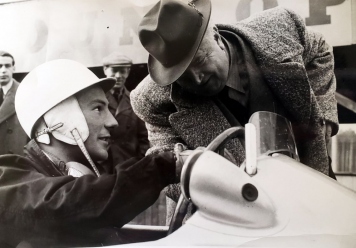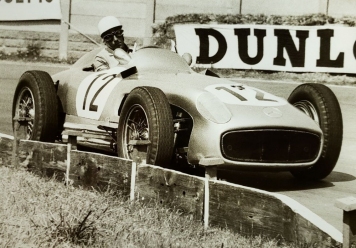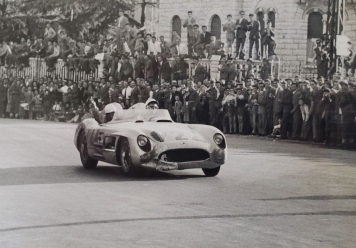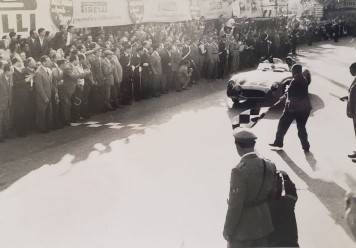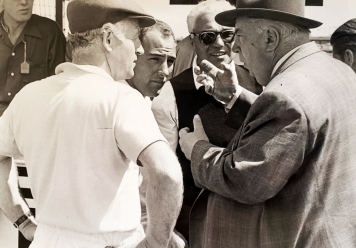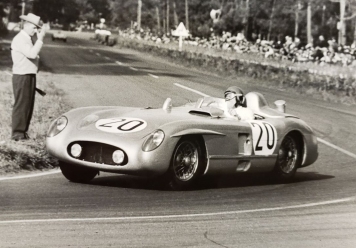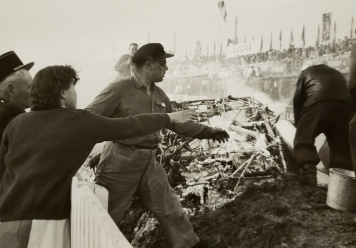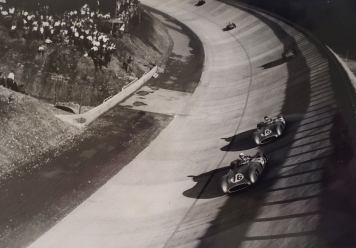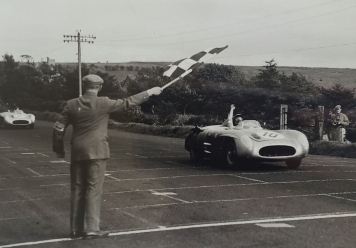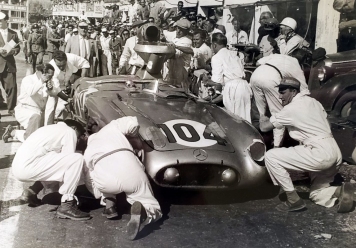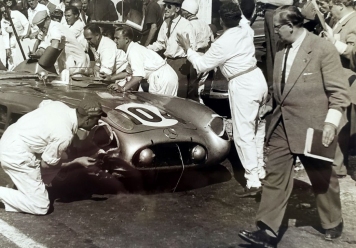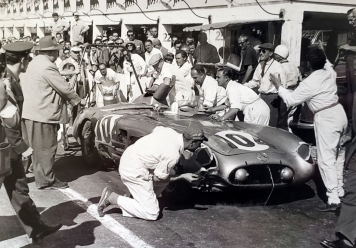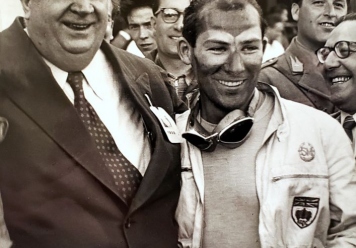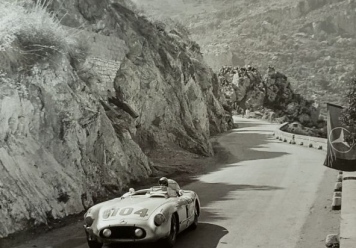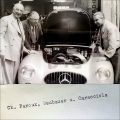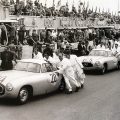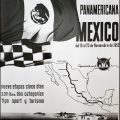The 1955 year in motorsport is littered with legendary happenings. Here, we explore several key events surrounding the introduction of Stirling Moss to the Mercedes racing team through archival photos. This photo article spans December 1954 at Hockenheim where Moss first auditioned in a Mercedes for Neubauer to the Targa Florio in October 1955 where Moss notched a victory for the ages.
Hockenheim 1954
By 1953 legendary race team strategist and team leader for Mercedes, Alfred Neubauer, made the suggestion to a young Stirling Moss that, given his success in relatively uncompetitive cars at the time, he should consider perhaps buying himself a better one for the 1954 season. Neubauer was keen on the idea of having Moss join Mercedes but first wanted to see how the young Brit would perform with better machinery underneath him. And so in 1954, Moss bought himself a Maserati 250F, a rather unreliable car but a high performance one, that allowed him to show the “it” factor that Neubauer suspected he could shine with on the biggest stages.

COPY Of course it was Neubauer who signed the British Moss for Mercedes. He explains to Moss the instruments of the Mercedes W196 race car during his first test drive for Neubauer in Hockenheim in December 1954 COPY At bottom left, Moss drives the W196 and cements his place in Neubauers mind as the future of Mercedes racing.
Mille Miglia 1955
April 30th, 1955 – Italy’s thousand-mile Mille Miglia road race was won by Stirling Moss as he drove in the magnesium alloy bodied 300SLR for Mercedes, an achievement famously described by English motorsports journalist Doug Nye as the “most iconic single day’s drive in motor racing history”. Motor Trend Magazine headlined it as “The Most Epic Drive. Ever.” Despite legend Juan Manuel Fangio warning against navigators being used because of the dangers encountered during the race at Brescia, Journalist Denis Jenkinson was chosen by Stirling Moss to accompany him on this famous journey so that Moss might be able to handle the difficulties that the Brescia race had in store as the Mercedes team faced the Italian drivers from Ferrari, notably Taruffi, Castelloti, Marzotto and Maglioli, who were much better versed in the local terrain. Through his own brilliance, dedicated navigation aid from Jenkinson and a bit of misfortune befalling his main rivals, Moss won a legendary 1000 mile race that will never be forgotten. Of the 534 cars to start the event, Moss finished first.
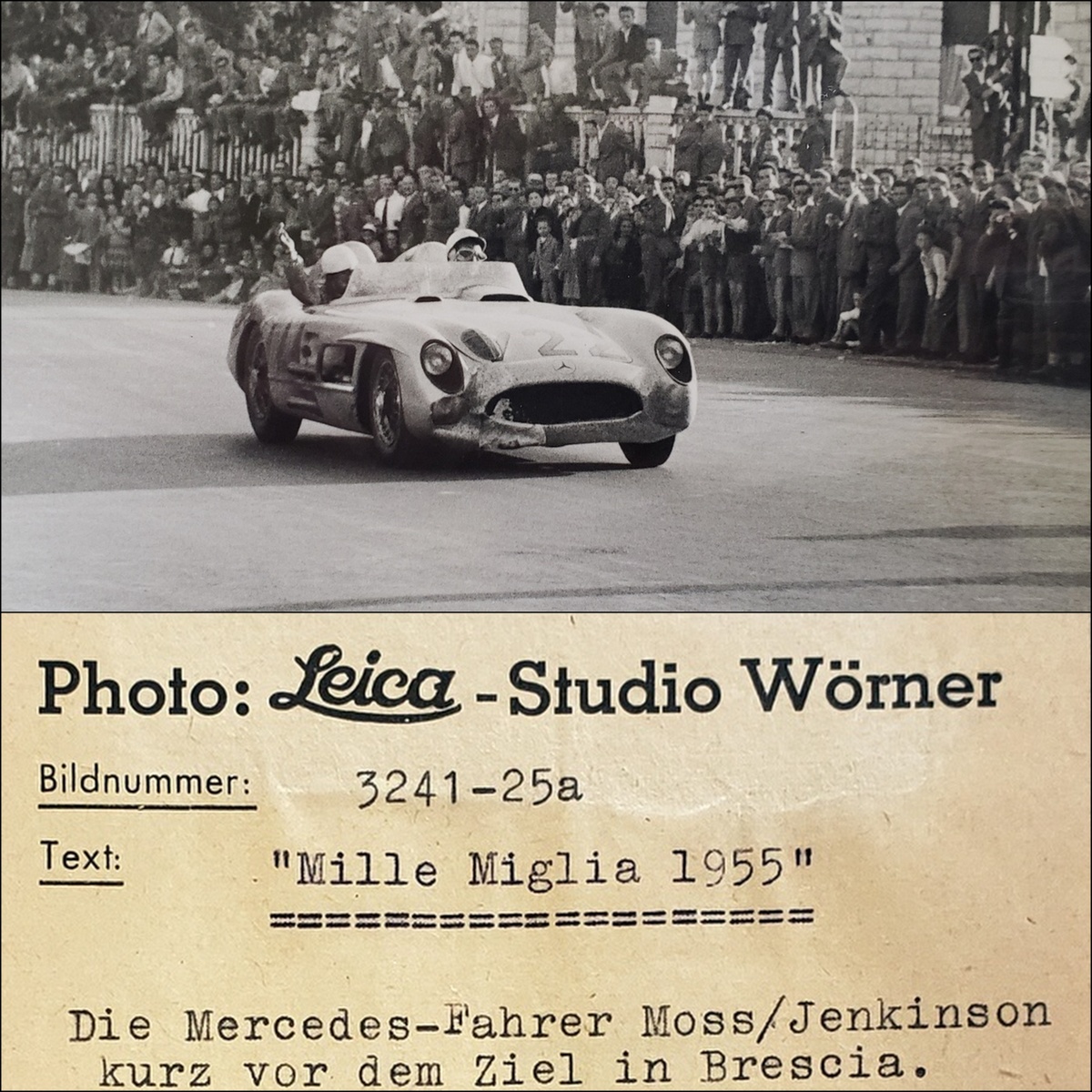
COPY Mercedes drivers Stirling Moss and Denis Jenkinson shortly before the finish at Brescia END COPY
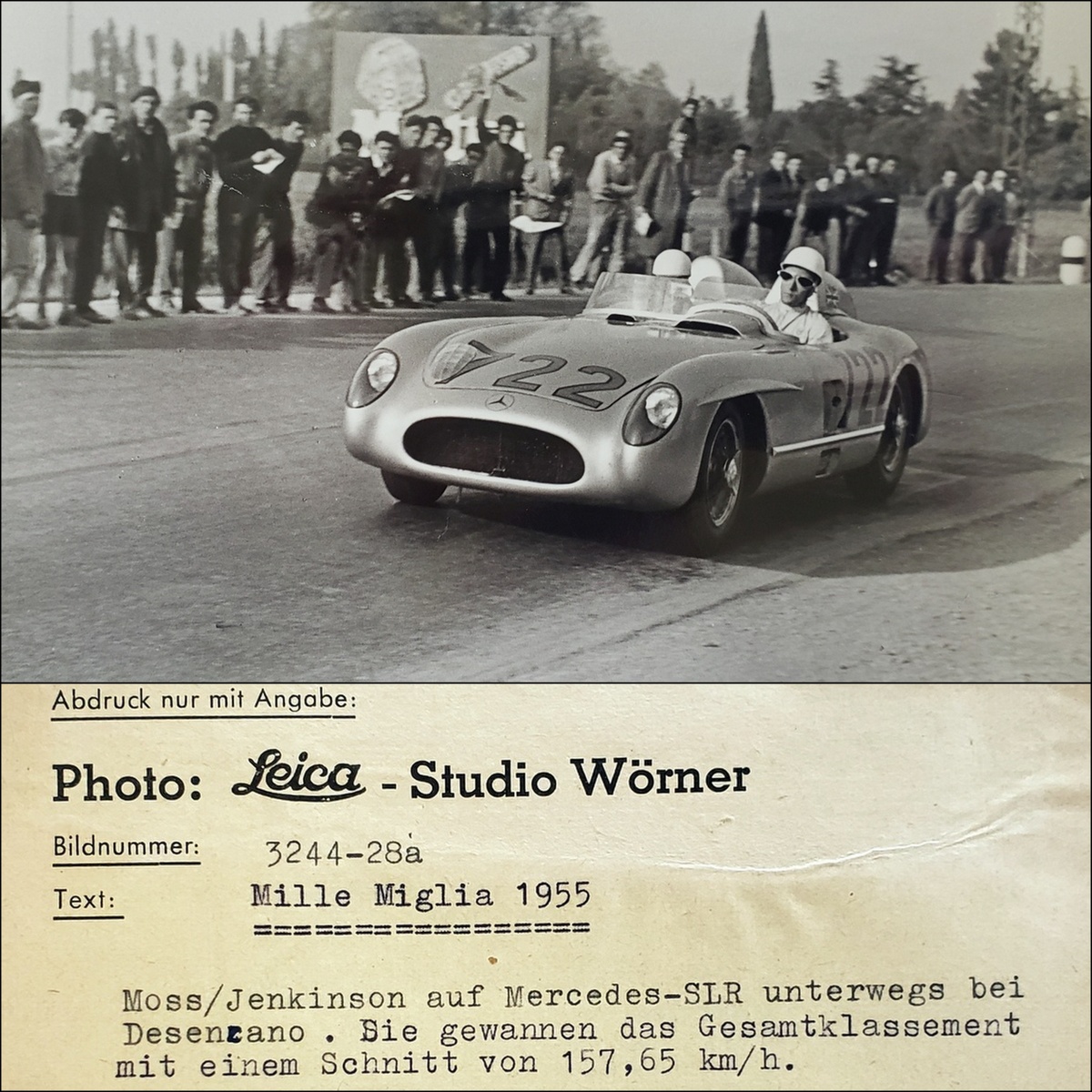
COPY Moss/Jenkinson in the Mercedes-SLR on the road at Desenzano. The win comes at an average speed of 157.65 km/h END COPY
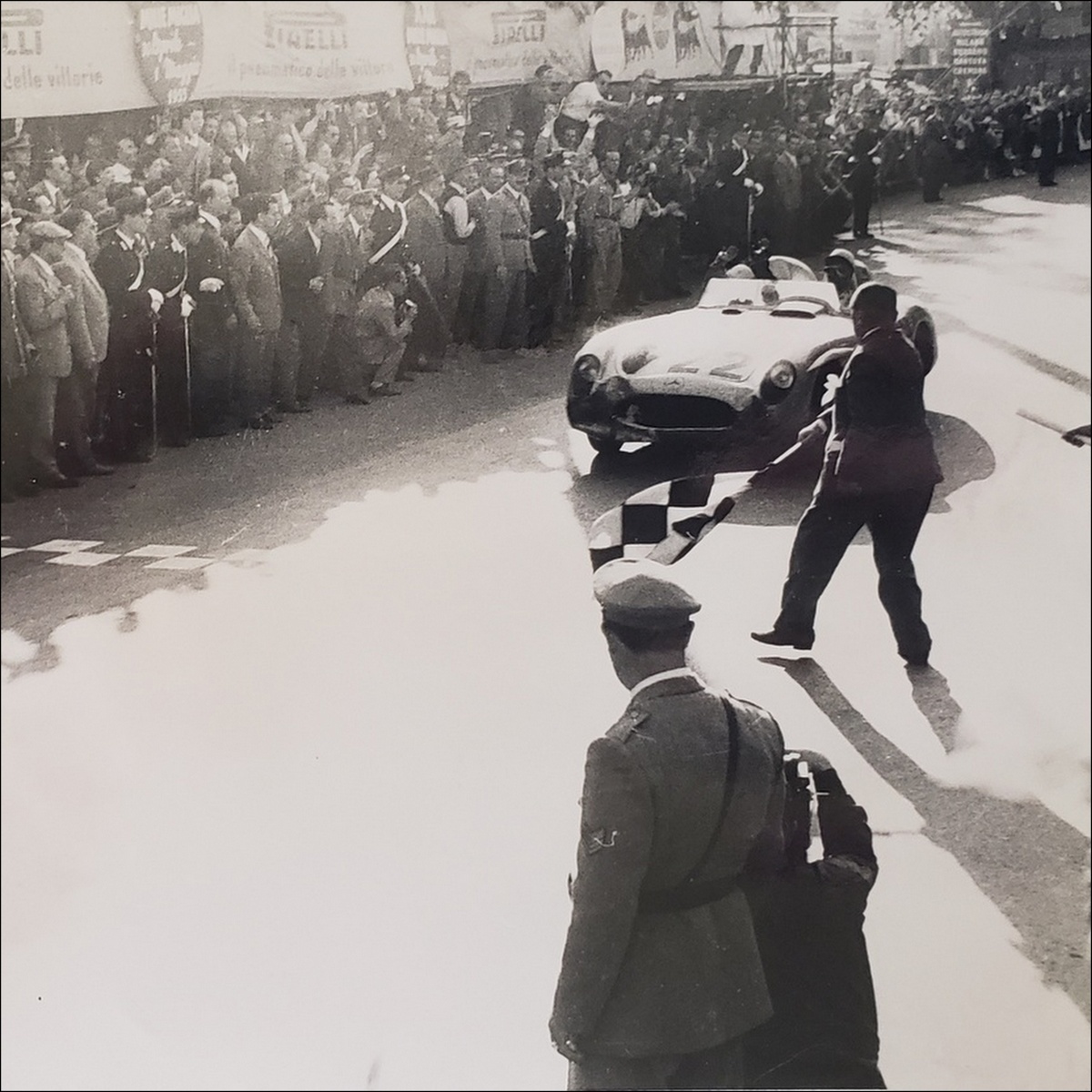
COPY At 130MPH, Stirling Moss crosses the finishes line in the Mercedes 300SLR END COPY
Disaster at LeMans 1955
June 11th, 1955 – Quite simply and quite catastrophically, the most disastrous day in motorsport racing history. Pierre Levegh’s magnesium bodied 300SLR, through a series of poor decisions by other drivers and circumstance, became a missile as the car rear ended another pulling out of the pits at 125 miles per hour. The rear end collision caused Levegh’s Mercedes to launch into the stands, in the process disintegrating, killing Levegh along more than 80 onlookers while injuring nearly 200 more. All blame accusations and controversy aside, decisions that day shaped a famous and equally infamous season in motorsport history. The stuff of tragedy and legend.
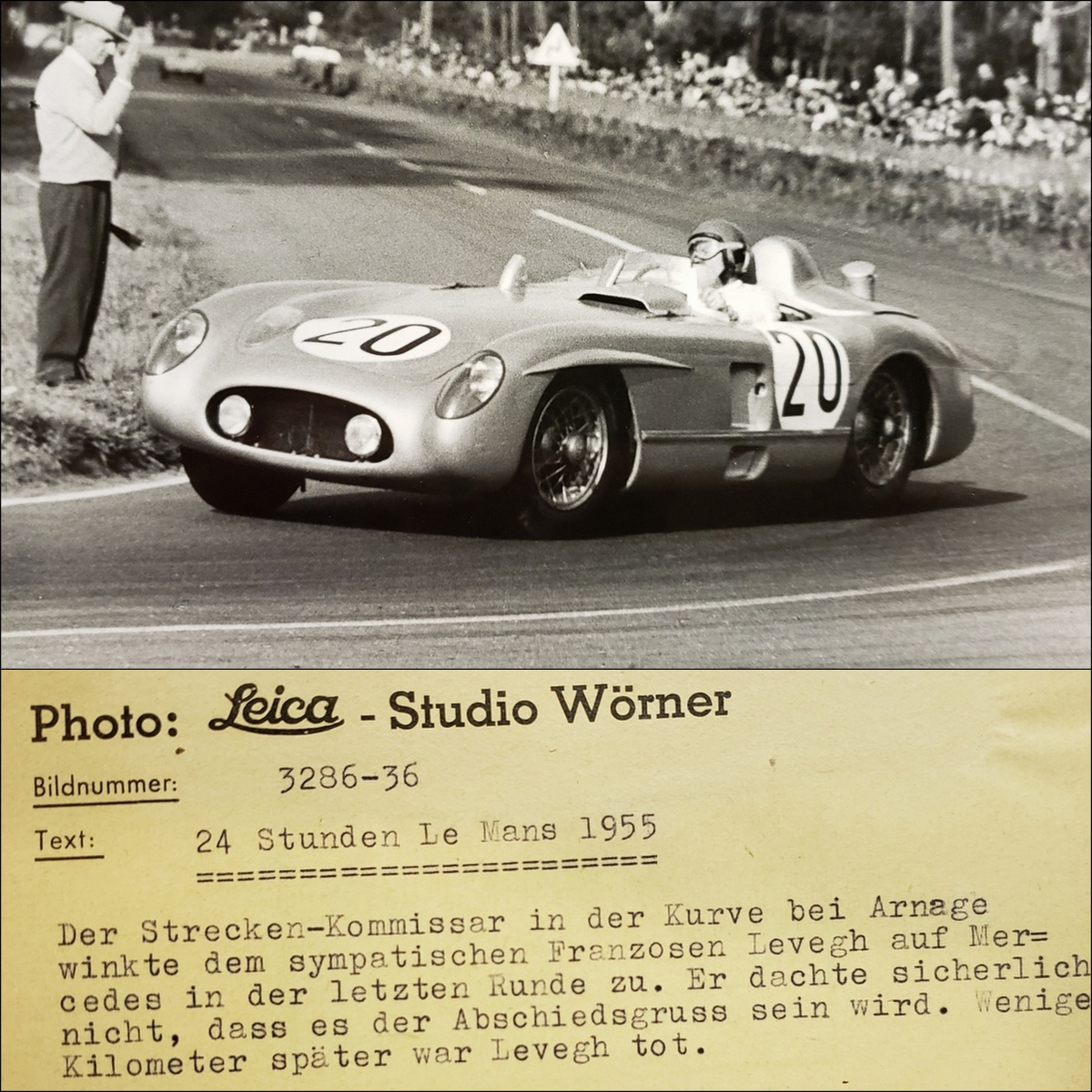
COPY The route inspector in the curve at Arnage waved to the likable Frenchman Levegh in Mercedes on the last lap. He certainly didn’t think it would be the farewell. Levegh was dead a few kilometers later. END COPY
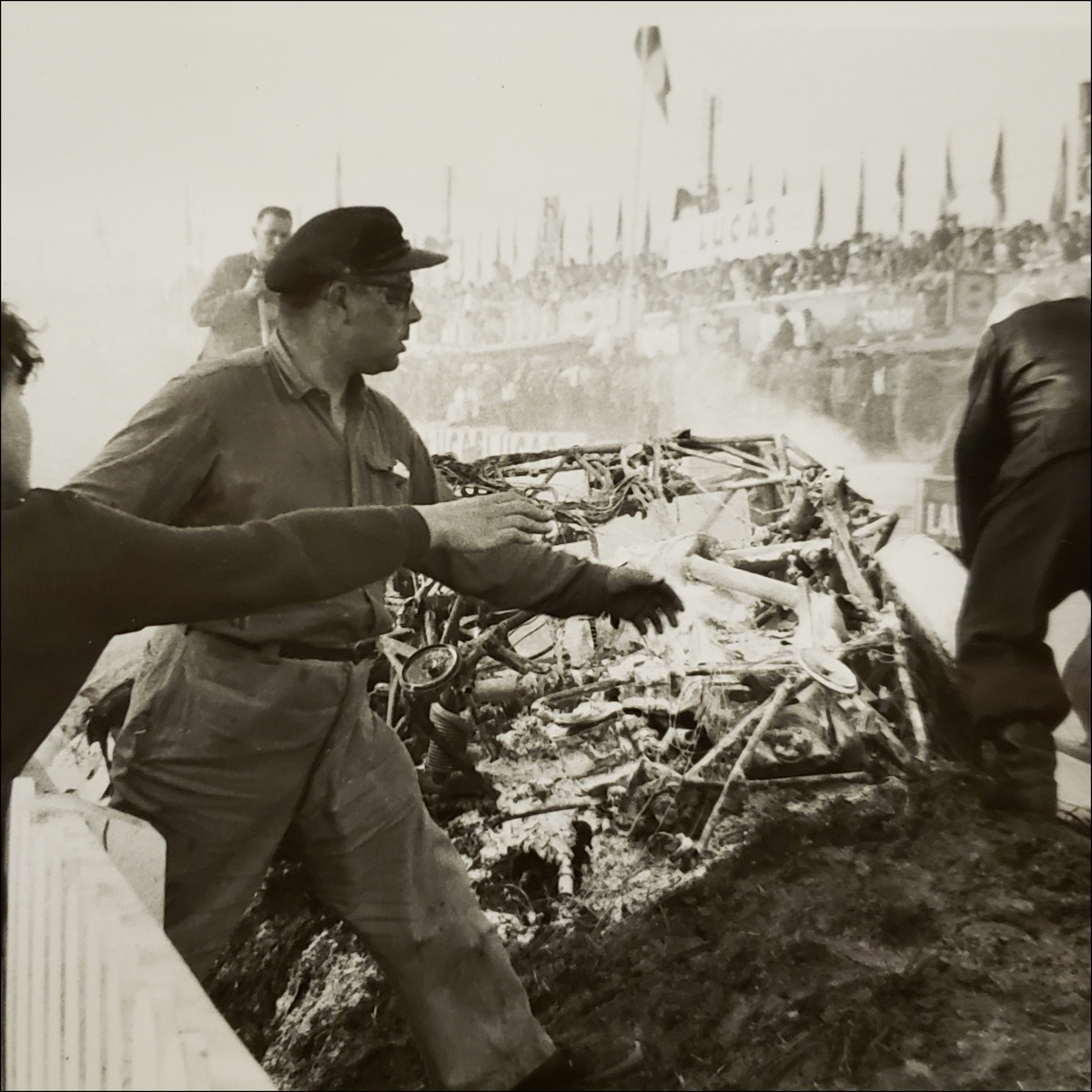
The shock of the events at Le Mans, embodied by the smoldering chassis of the magnesium alloy Mercedes 300SLR driven by Levegh.
Grand Prix of England 1955
July 16th, 1955 – As the second to last, sixth of seven, race of the 1955 Formula One Season, the race at Aintree had incredible importance to the overall chase for the World Driver’s Championship. After the race, the German, Spanish and Swiss Grand Prix were cancelled leaving only the Italian Grand Prix at Monza to decide the title race. Despite denials from the almost universally recognized “greatest ever”, Juan Manual Fangio, it was rumored that he “allowed” his young protege Stirling Moss to win in front of the home crowd. Of course Fangio always denied this and with much humility gave all credit to Moss for his winning performance. It was another utter domination for Mercedes with a 1, 2, 3 and 4 finish! Moss, followed by Fangio, Kling and Taruffi.
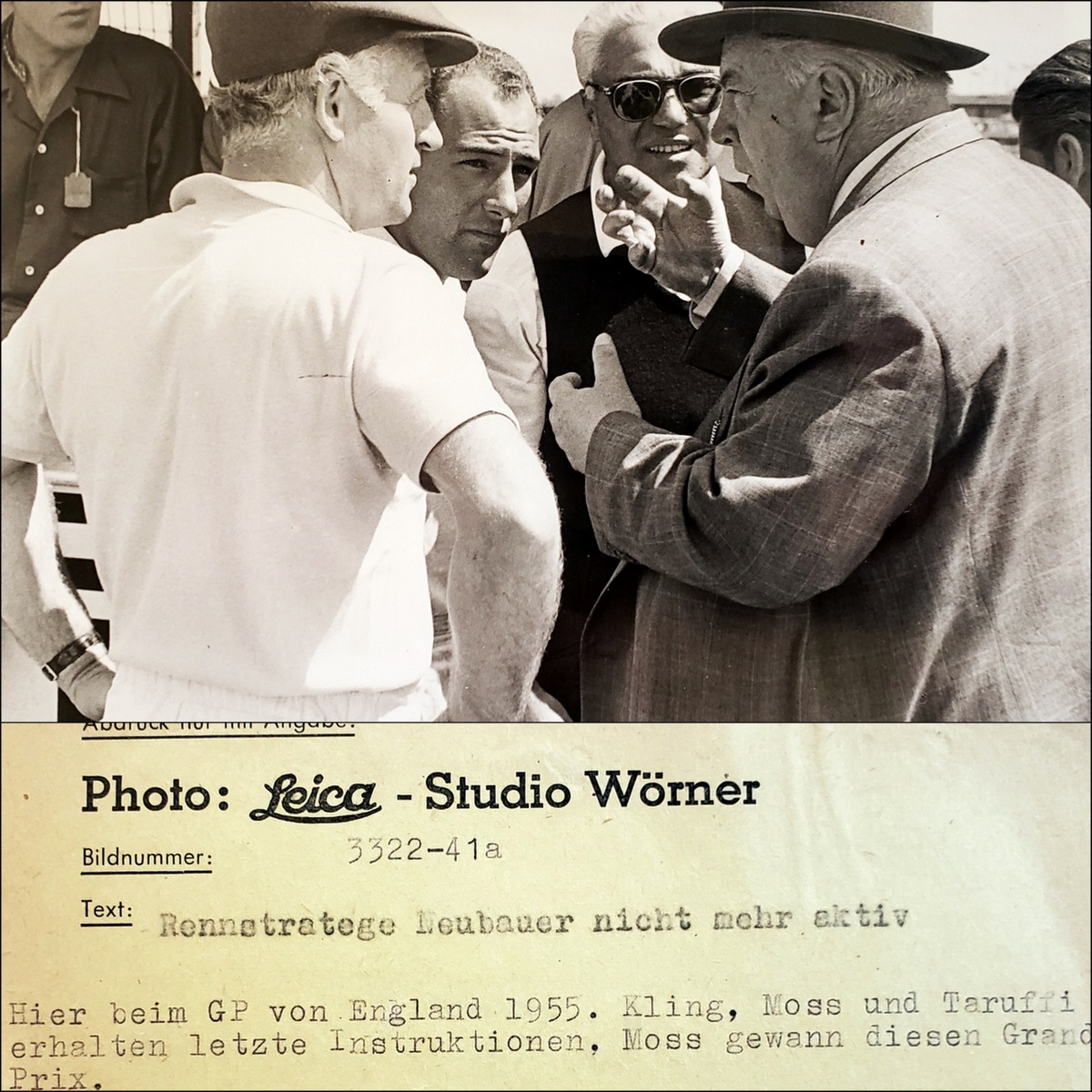
COPY From left to right, drivers Karl Kling, Sterling Moss and Piero Taruffi listen to instruction from Alfred Neubauer. Grand Prix of England 1955, Stirling Moss is victorious! END COPY
Italian Grand Prix 1955
September 11, 1955 – The last race of the 1955 Formula One season and the culmination to the World Drivers Championship that saw Juan Manuel Fangio win the day at the Monza track along with his 3rd WDC. In this event, Fangio and Moss drove the closed wheel W196’s while Karl Kling and Pierro Taruffi drove the open wheel cars. This was also notable as the final time the streamline closed wheel 196’s were driven at a Championship GP.
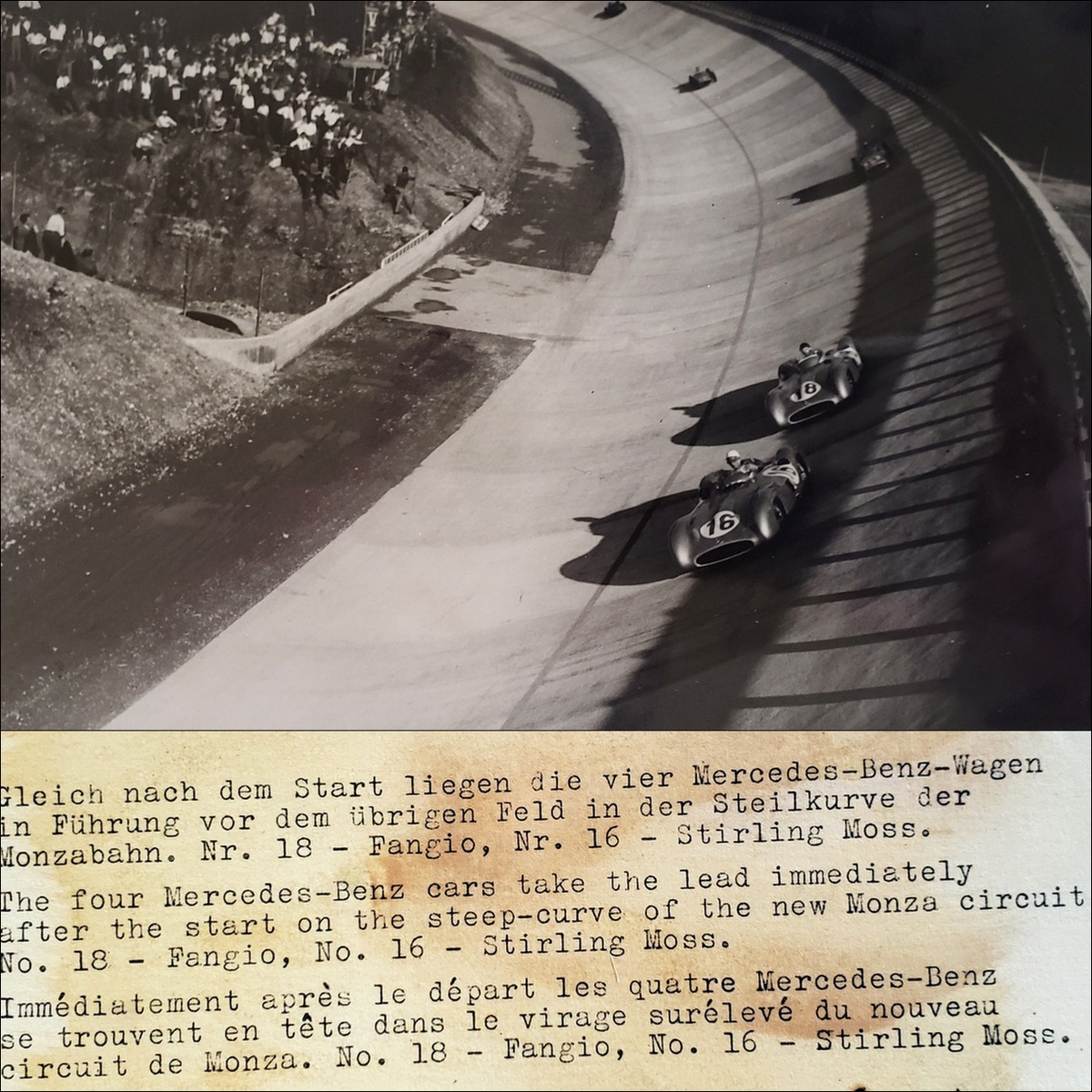
COPY The four Mercedes-Benz cars take the lead immediately after the start on the steep curve of the new Monza circuit. No. 18 – Fangio, No. 16 – Stirling Moss. END COPY
RAC Tourist Trophy 1955
September 18th, 1955 – Notable as both a superb victory for Mercedes’ English duo of Stirling Moss and Jon Fitch in County Antrim, Northern Ireland and as the first FIA World Sports Car Championship event after Pierre Levegh tragically died along with over 80 spectators at the 24 Hours of Le Mans in June of that year. It was another difficult to bare day for racing, marred by the death of three more drivers but also as a feather in the cap for Stirling Moss in his victory. The event was dominated by the Mercedes trio of Moss, Fangio and Von Trips, all driving the now legendary W196S 300SLR. Aside from the continuation of tragedy carried over from Le Mans, Moss’ driving prowess and legendary nature as a daredevil supreme cement this iconic moment in the annals racing history.
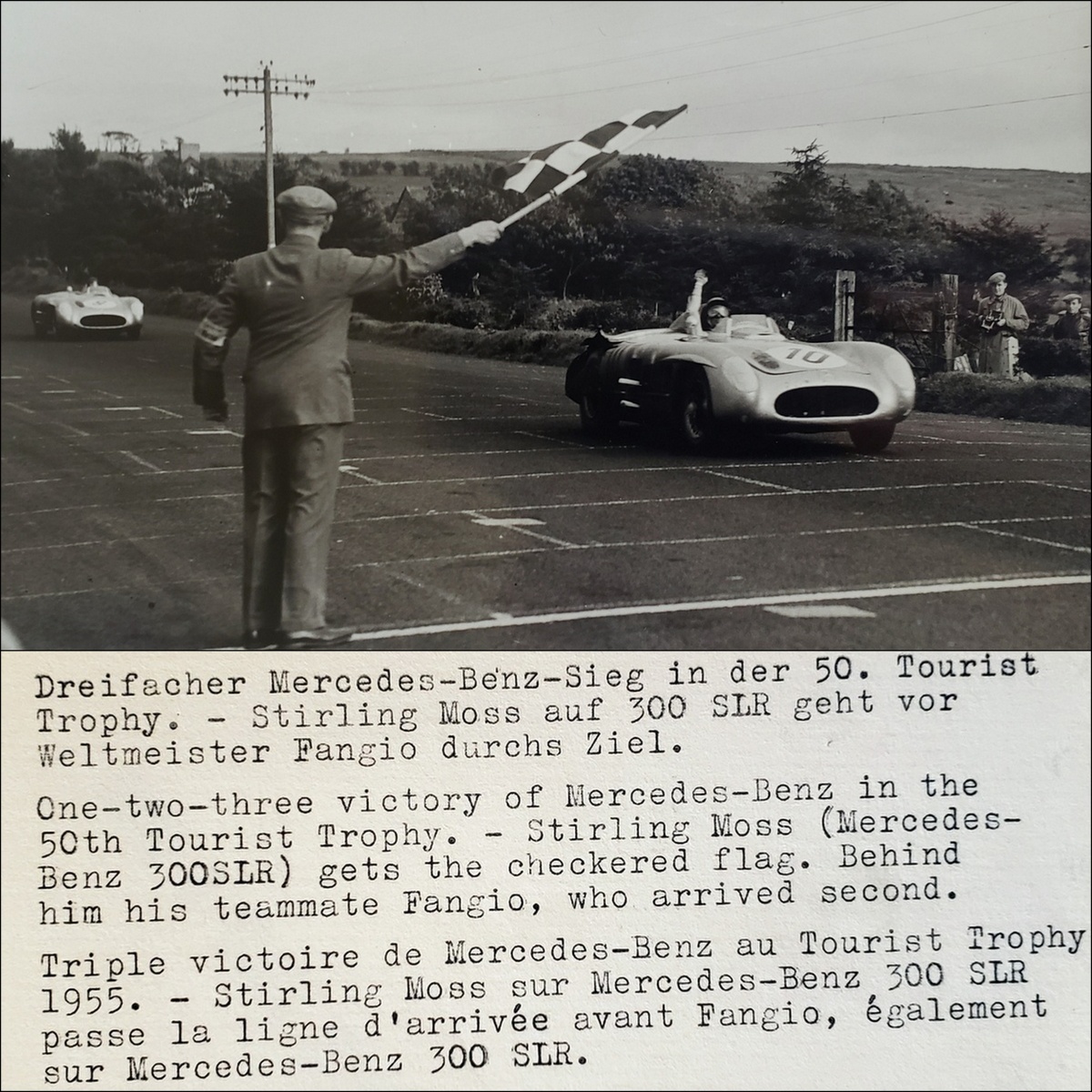
One-Two-Three victory of Mercedes-Benz in the 50th Tourist Trophy. Stirling Moss gets the checkered flag. Behind him teammate Fangio, who arrived second.
Targa Florio 1955
October 16th, 1955 – Thirteen laps at 44.64 miles each for a total of roughly 10 hours and over 581 miles covered, the Targa Florio of 1955 was a Mercedes swan song of sorts as it was the teams last official race driven for 20+ years. Team Mercedes was led by loners Fangio and Kling and tandems Moss/Collins and Fitch/Titterington. Stirling Moss drove according to his reputation, at the edges of danger and mechanical overexertion. It paid off for Mercedes, as Moss along with co-driver Peter Collins finished first, some 4 minutes plus ahead of teammate Juan Manuel Fangio.
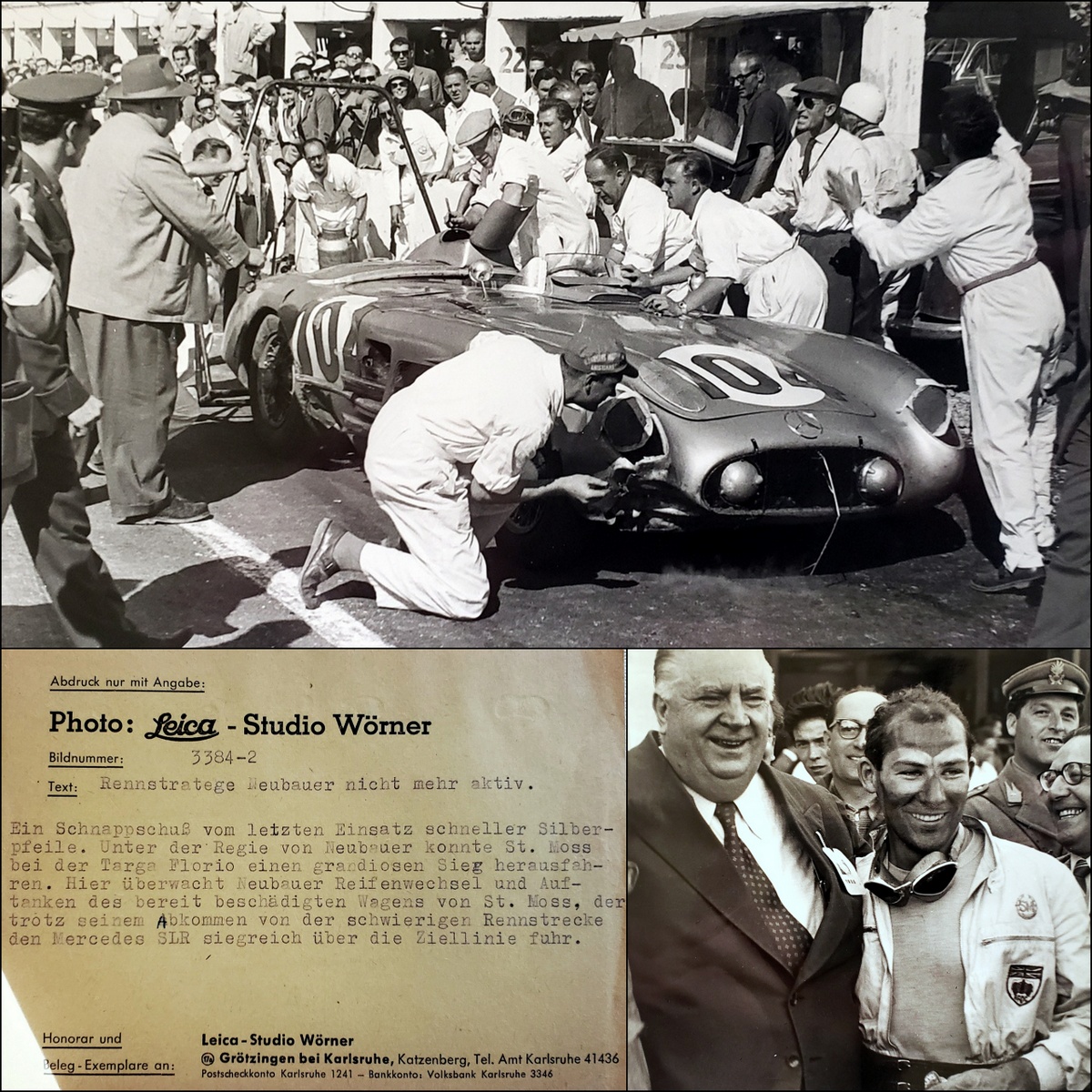
COPY A snapshot of the last use of the fast silver arrows. Under the direction of Neubauer, Sterling Moss achieved a grand victory at the Targa Florio. Here Neubauer oversees the tire change and refueling of the damaged car driven by Sterling Moss, who despite ordeals delivered generously by the difficult race track successfully drove the Mercedes SLR across the finish line. END COPY
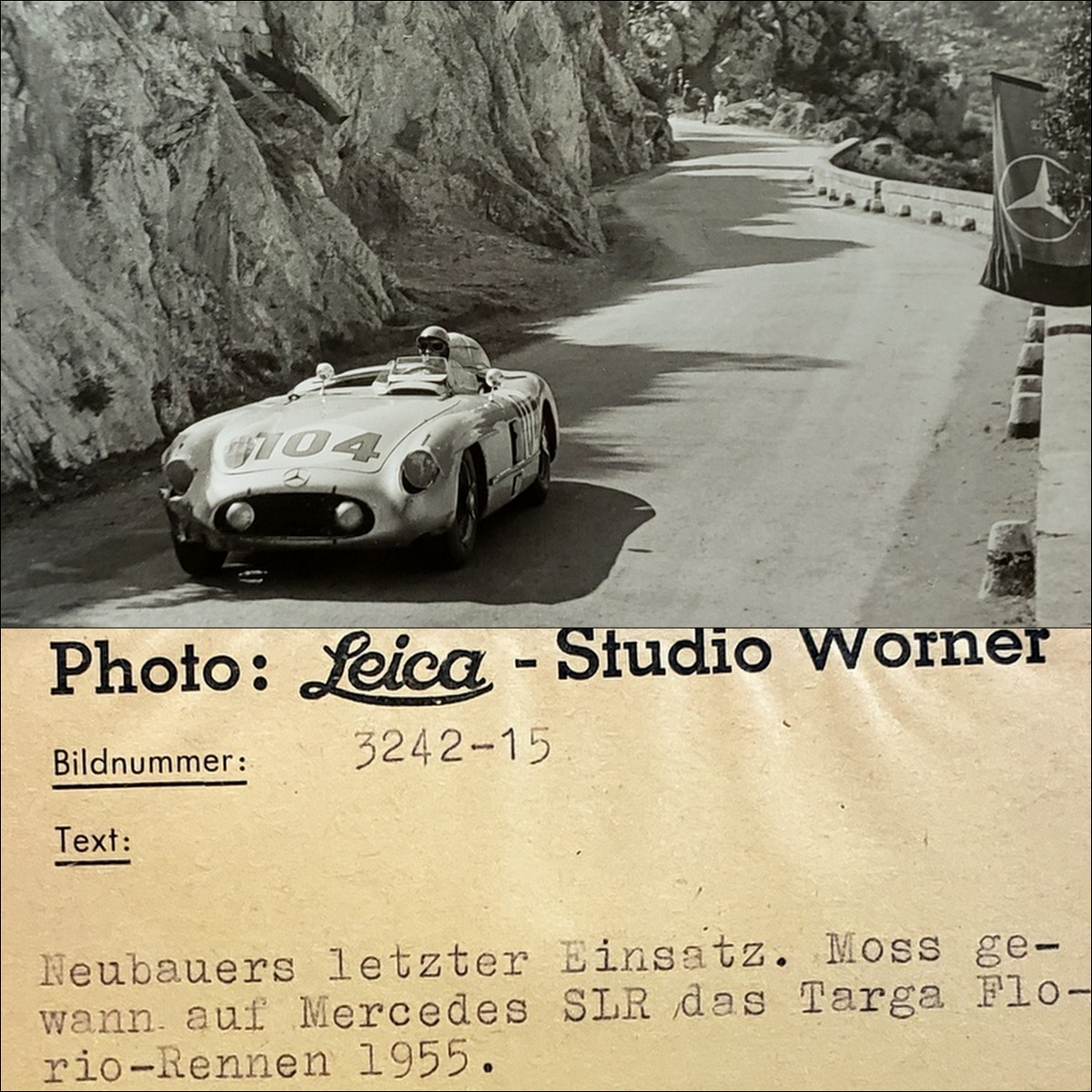
COPY Neubauer’s last assignment. Moss won the 1955 Targa Florio race in a Mercedes SLR END COPY
